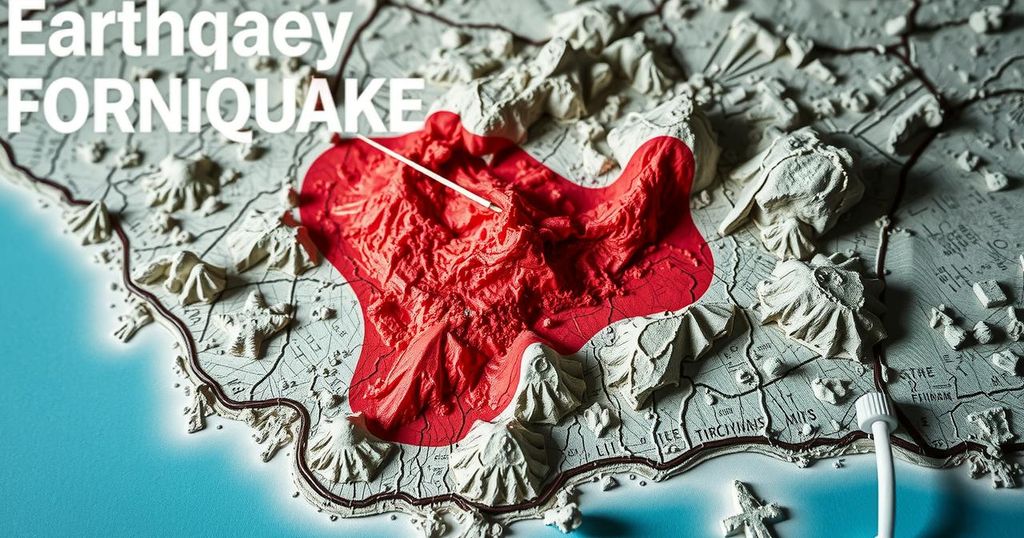6.1-Magnitude Earthquake Hits Chile Amid Series of Recent Seismic Events

A 6.1-magnitude earthquake struck Chile on January 2nd, with prior tremors in California and Alaska. Significant earthquakes have been recorded including a 4.7-magnitude quake in California and 6.7-magnitude in the Kuril Islands, highlighting continuing seismic activity in these regions.
A 6.1-magnitude earthquake occurred in Chile on January 2nd, as reported by the United States Geological Survey (USGS). The quake was centered near Calama at a depth of 99 kilometers (approximately 61.5 miles). At the time of the report, the USGS received 25 accounts from individuals who felt the tremor. This seismic activity followed a 4.7-magnitude earthquake in California that struck on January 1st, centered in Cobb at a shallow depth of merely 1.1 kilometers (about 0.7 miles).
Prior seismic events include a 3.3-magnitude earthquake in Alaska on December 30th, centered in Nikolski at a depth of 39.5 kilometers (about 25 miles) and a similar 3.3-magnitude quake in Fort Bidwell, California earlier that day, reported at a depth of 3.4 kilometers (approximately 2.1 miles). Additionally, a significant 6.7-magnitude earthquake was documented on the Kuril Islands on December 27th, situated at a depth of 162.6 kilometers (approximately 101 miles).
This sequence of earthquakes also follows a 3.6-magnitude tremor in McCarthy, Alaska, on December 26th, with a depth of 8.1 kilometers (about five miles) and a 3.0-magnitude quake in Clayton, California, on December 25th, at a depth of 13.2 kilometers (around 8.2 miles). Notably, the California earthquake events transpired shortly after a 5.9-magnitude earthquake reported in Cuba on December 23rd, which was centered in Guisa at a depth of 22.2 kilometers (about 13.8 miles).
Understanding recent seismic events provides vital insight into the geological activity across various regions. Chile is known for its frequent earthquakes due to its position along the Pacific Ring of Fire, an area with significant tectonic activity. Meanwhile, California also experiences numerous quakes due to fault lines, notably the San Andreas Fault. The USGS plays a crucial role in monitoring these seismic occurrences, offering timely data and assessments on earthquake magnitude, depth, and affected locations.
In summary, the recent 6.1-magnitude earthquake in Chile highlights the persistent seismic activity in regions prone to such events. Following several notable earthquakes across California and Alaska, these occurrences underline the ongoing geological dynamics intrinsic to the Pacific Ring of Fire and associated fault lines. Monitoring by the USGS remains essential for public awareness and preparedness against future seismic risks.
Original Source: www.kogo.com








